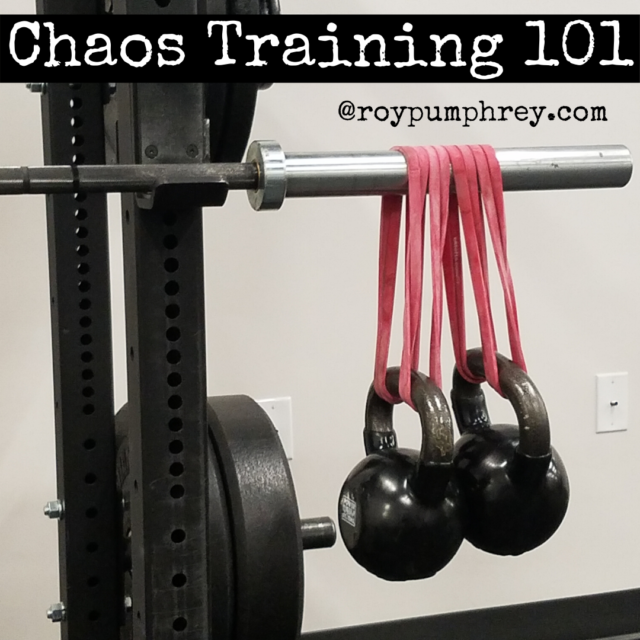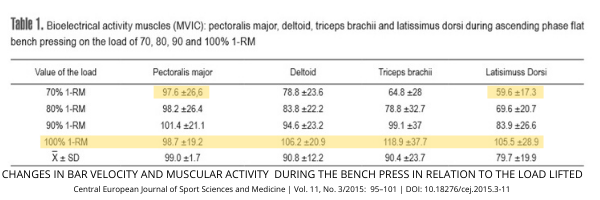
“Better learn to get tight, real f**cking fast, or you’ll lose some teeth”
– Matt Wenning
That’s the best way I’ve heard chaos training ever described.
If you’ve been around here for a while you should know by now that i’m not really a fan of unstable surface training for strength, power, hypertrophy and really all things awesome.
Occasionally, it can be used as a deload, to strengthen “stabilizers” and just be a change for monotony.
But it ain’t gonna do much for you long term.
The fundamental issue with unstable surface training,
The Ground Moves
and joint centration becomes a beotch, force needs to be diverted from power production to joint stabilization and you get weaker, slower and less athletic.
A large part of this is probably because the lower body interacts with the ground in a closed chain fashion in the real world, all the time.
But the upper body doesn’t.
In the real world, the upper body functions in an open chain fashion the vast majority of the time….
Chaos Training
Chaos or Hanging Bells: Hanging weights from the barbell using elastic bands.
This creates a “chaos” or unstable environment where the movement of the hanging weights will exert force on the barbell in multiple force vectors.
In other words:
“Get loose and that mother#*cker will mother@ck you” and take your teeth out (at least when benching).
What Does Chaos Training Do?
You don’t have to use a bamboo bar, yes they’re beset, but you can get away with using a regular barbell for hanging bells.
Chaos training, hanging weights from the barbell, forces you to “get tight” and stay tight.
Physiologically, Chaos Training forces the stabilizer or secondary muscles to fire harder more to center (stabilize) the joints through the movement,
“During the unstable condition, the bar moved in more ways and was less predictable in the mediolateral and anteroposterior directions. However, the muscle activation patterns of all muscles were more constrained with the unstable barbell. These findings suggest that the unstable condition was more challenging to control, but subjects controlled the instability by contracting their muscles in a more stable pattern or “staying tight” throughout the exercise.” – Nonlinear Analysis of an Unstable Bench Press Bar Path and Muscle Activation
As unbelievable as this might sound, beginner and novice lifters have a terribly difficult time creating tension in the non primary moves and not allowing extra movement during an exercise.
This extra movement is commonly referred to as “looseness” or more technically, a force leak.,
Force leaks result in a less stable platform to transmit force through and less force driven through the bar.
This is commonly seen in the bench press when a new lifter kicks a foot out while performing the exercise.
Attach some bells to the bar, kick that foot out, and see what happens….
This “tightness”, in large part is due to a higher level of…
Antagonist Co-Contraction:
Antagonists are the muscles that don’t create the motion during a movement.
In the bench press muscles like the triceps, delts and pecs create the motion as agonists, while the biceps, rear delts and lats work in an antagonist fashion to help control the bar path (by controlling the motion/ position of the joints..
If your antagonists fatigue or are weakened the agonist must work harder to pick up the slack in stabilizing the joint.
“The antagonist muscle is responsible for maintaining posture, as well as stabilizing the related joint during a sustained contraction (Griffith et al. 2010). The net force produced by a certain joint is the difference between the amount of force generated by the agonist and by the antagonist. Thus, a quicker decline in the antagonist muscle EMG MNF is an indication of a faster fatiguing rate of triceps muscle, which could have the required greater antagonist muscle activation, thereby further requiring greater agonist muscle activity to meet the requirement of the net force“- Sex comparisons of agonist and antagonist muscle electromyographic parameters during two different submaximal isometric fatiguing tasks
This occurs because the net force around a joint must be maintained in order to keep the joint centered and complete the lift.
Antagonists are Most Active at High Intensities
During the initial stages of weight training, with lighter loads and at high velocities antagonists are actually down regulated ie they fire less,
“Cross-sectional studies have found lower coactivation in strength/power trained athletes than untrained controls. Carolan and Cafarelli found a significant decrease in antagonistic activation that mostly occurred in the first week of an isometric knee extensor training programme.” – The Adaptations to Strength Training: Morphological and Neurological Contributions to increased Strength.
But this is seen in new lifters as the neuromuscular system coordinates the motion and speed sports like sprinting where agonist/ antagonist co-activation results in slower joint velocities.
Over time as the neuromuscular system becomes accustomed to a movement and higher loads (force across the joint) increase antagonist co-activation increases.
To what extent does antagonist co-activation increase?
Lats are Actually Important in the Bench Press
He’s taken a lot of crap over the years for this one, but….
#Louiewasright: Overcoming Plateus Part 2: The Bench Press

As the load in the bench press increases so does the antagonist activation in the delts and lats,
“The increase in bar velocity for the 90% of 1RM load is caused by increased activity of the pectoralis major, deltoid and latisimuss dorsi muscles.
These relationships change significantly during lifts with a load of 100% 1RM, where the decrease in bar velocity is caused by an increase in the bioelectrical activity of the deltoid and latissimus dorsi muscles. This may indicate that a higher activity of these muscle groups is significantly related to flat bench press performance.” – Changes in Bar Velocity and Muscular Activity During the Bench Press in relation to the Load Lifted
Most likely the decrease in bar velocity, due to increased antagonist activation, is because the antagonists must maintain joint stability and net force across the joint in a situation during which the primary movers are on the whole at or nearly “maxed out” creating concentric muscle action.
What’s this Got to Do With Chaos Training?
It seems that you can train the increased agonist- antagonist co-contraction seen with maximal stable loads when using chaos training at lesser loads,
“muscle activation of the LD (latissimus dorsi) was significantly greater at the higher intensity, which may provide evidence that the LD is a secondary muscle used in the bench press. To our knowledge, this is the first study to examine activation of the LD during the bench press at 2 separate intensities. Owing to the LD role as an adductor of the humerus, it may assist as an important synergist in this movement keeping the elbows tucked into the body during the concentric portion of the lift.”– Bench Press Upper-Body Muscle Activation Between Stable and Unstable Loads
“right and left biceps and the left middle deltoid were significantly more active in the unstable condition. Some of the stabilizing muscles were found to be significantly more active in the unstable condition with 15% less weight. Therefore, bench pressing with an unstable load appears promising in activating stabilizing musculature compared with pressing a typical barbell.” – Effect of an Unstable Load on Primary and Stabilizing Muscles During the Bench Press
that’s right, a lighter load created higher muscle activity when using an unstable load.
Lighter loads mean it can be trained more often and with a higher volume.
Lets face it, 1RM sets beat you up and can only be performed every so often.
So Only Hanging Bells From Now On?
Not in the least.
In my experience, the very best, most experienced, lifters using hanging bells can only use upwards of 60%, and that’s probably pushing it.
Granted the bar, band used, weights even, all have effect on the instability of the bar and therefore the absolute load that can be lifted.
Ie a thicker light band has far less movement than a thinner miniband and a single 50lbs kettlebell creates far less turbulence than two 25lbs(ers).
How To Use Chaos Training?
Sparingly.
Warmup, prehab, rehab, deload, and accessory work would all be an ok place to put it.
I don’t think I’d use hanging bells for a max effort lift.
But you might be able to convince me I should, but it would be rarely in the program.
If someone has a really tough time staying tight or a “all over hell and creation” bar path I’d use chaos training every bench session until those are corrected.
For most, 2-4 sets in the 8-20 range, every 2-4 weeks is probably enough to be effective but not be a time waster due to the lesser loads. <—-again this is variable depending on the needs of the person performing the exercise.
The real magic is in learning to STAY TIGHT actively contract your upper back and lats (at least during the bench press) and perfect your BAR PATH.
Chaos training is VERY unforgiving.
God help you if you miss groove a rep. <—-this is a good thing
You can’t relax, you must be tight,
Through- The – Whole- Rep.
Or lose some teeth.
Matt Wenning says all this stuff in 6 minutes and WITH MOVING PICTURES!
P.S:
While I do think your can use Chaos Training for the lower body, I don’t think its quite so effective, but can have a place. <—-that place is probably again, in teaching tightness and rooting the foot.
P.S.S:
I LOVE chaos training for the “core” and think its actually superior in many respects to more traditional training.
Why?
The “core” is built as a corset with muscles acting along different lines of pull to create stability (STOP motion) in multiple directions/ planes of movement.
Because Chaos Training introduces forces in an unpredictable manner in multiple directions/ planes of movement….see what I’m saying?


